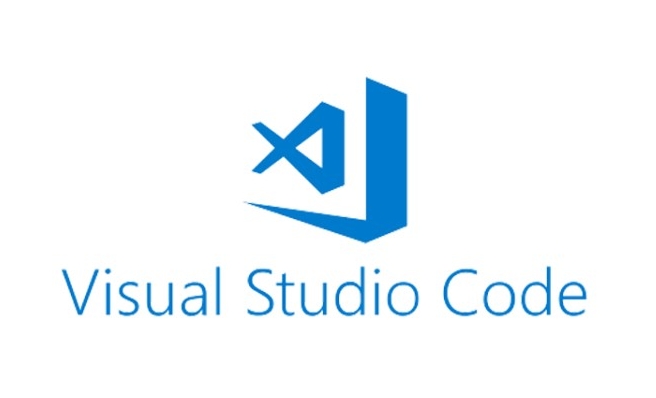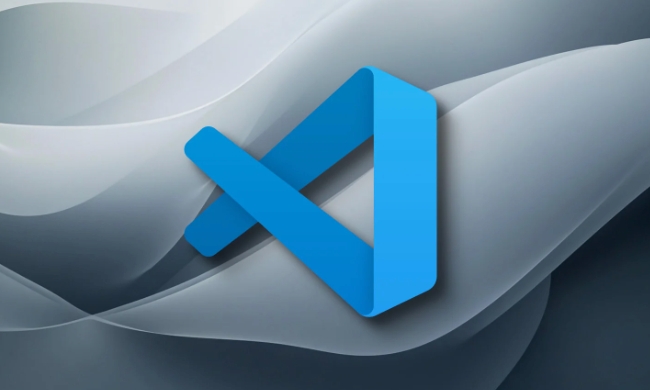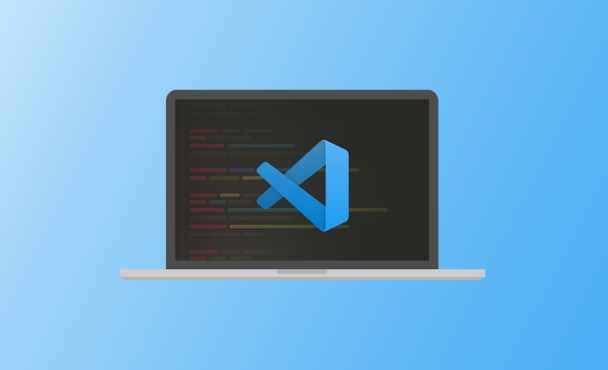"justMyCode" is a feature that skips system or third-party library code during debugging, triggering breakpoints only in user-defined code. 1. It is enabled through launch.json configuration "justMyCode": true, suitable for languages ??such as Python, C#, JavaScript; 2. Suitable for debugging business logic, quickly locate problems, or when you are not familiar with dependency libraries; 3. It is not suitable for analyzing third-party libraries, debugging framework source code or project itself as a library; 4. Pay attention to different levels of support for different debuggers, and there may be problems such as incorrect library code or configuration failure, and you need to upgrade the plug-in to solve it.

The debugging experience of VSCode Just My Code debugging setting Just My Code debugging setting Just My Code debugging setting is very mature, but many people may not have noticed a small detail that improves debugging efficiency: the "Just My Code" setting . This function can help you skip the code of the system library and third-party library, and only stop it in the code you wrote yourself, reducing unnecessary single-step entry.

What is "Just My Code"
" Just My Code " is a debugger behavior control option, meaning "only debug my own code". When enabled, the debugger ignores non-user code (such as standard libraries, third-party modules), and will trigger breakpoints or single-step execution only when executing the functions you wrote.

It is not a unique feature of VSCode Just My Code debugging setting Just My Code debugging setting Just My Code debugging setting, but a behavior pattern supported by the underlying debuggers (such as Python debugpy or vsdbg).
How to enable Just My Code
Enabling Just My Code in VSCode Just My Code debugging setting Just My Code debugging setting Just My Code debugging setting is very simple, you only need to modify the configuration items in the launch.json file:

{
"type": "python",
"request": "launch",
"name": "Python: Debug the current file",
"program": "${file}",
"console": "integratedTerminal",
"justMyCode": true
} The key is the line "justMyCode": true . If you are using other languages, such as C# or JavaScript, you can also find out whether similar settings are supported in the corresponding configuration.
?? Note: Different languages ??and debuggers support this option differently, and some names may vary slightly, such as
skipLibrariesorignoreExternalSources.
When is Just My Code suitable
- You are debugging the business logic you write and don't want to frequently enter libraries like
pandasandrequests. - Want to quickly locate the problem instead of being interfered by various intermediate layers in the call stack.
- I just took over the project and am not familiar with the dependency library structure, so I just want to pay attention to the main process.
But there are some situations where this is not suitable:
- You want to analyze the internal behavior of a third-party library in depth.
- You are debugging the source code of the plug-in, extension, or framework itself.
- Your project itself is a packaged library, and you want to test its calling path.
Some easy pitfalls
- Some languages ??or debuggers turn off Just My Code by default . For example, Python debugpy defaults to
true, but some environments may change. - Just My Code is not perfect , and sometimes it will still go where you don't expect it, especially when you use decorators, asynchronous functions and other features.
- If you set
"justMyCode": falsebut still can't jump, it may be a debugger version problem, and it is recommended to upgrade the relevant plug-ins and runtime.
Basically that's it. Just My Code is not complicated, but it can save a lot of time in daily debugging, especially for novices, it is important to avoid detours. You can flexibly switch on and off according to the specific situation of the project, without having to keep on or not at all.
The above is the detailed content of VSCode 'Just My Code' debugging setting. For more information, please follow other related articles on the PHP Chinese website!

Hot AI Tools

Undress AI Tool
Undress images for free

Undresser.AI Undress
AI-powered app for creating realistic nude photos

AI Clothes Remover
Online AI tool for removing clothes from photos.

Clothoff.io
AI clothes remover

Video Face Swap
Swap faces in any video effortlessly with our completely free AI face swap tool!

Hot Article

Hot Tools

Notepad++7.3.1
Easy-to-use and free code editor

SublimeText3 Chinese version
Chinese version, very easy to use

Zend Studio 13.0.1
Powerful PHP integrated development environment

Dreamweaver CS6
Visual web development tools

SublimeText3 Mac version
God-level code editing software (SublimeText3)

Hot Topics
 How Do Generators Work in PHP?
Jul 11, 2025 am 03:12 AM
How Do Generators Work in PHP?
Jul 11, 2025 am 03:12 AM
AgeneratorinPHPisamemory-efficientwaytoiterateoverlargedatasetsbyyieldingvaluesoneatatimeinsteadofreturningthemallatonce.1.Generatorsusetheyieldkeywordtoproducevaluesondemand,reducingmemoryusage.2.Theyareusefulforhandlingbigloops,readinglargefiles,or
 How to prevent session hijacking in PHP?
Jul 11, 2025 am 03:15 AM
How to prevent session hijacking in PHP?
Jul 11, 2025 am 03:15 AM
To prevent session hijacking in PHP, the following measures need to be taken: 1. Use HTTPS to encrypt the transmission and set session.cookie_secure=1 in php.ini; 2. Set the security cookie attributes, including httponly, secure and samesite; 3. Call session_regenerate_id(true) when the user logs in or permissions change to change to change the SessionID; 4. Limit the Session life cycle, reasonably configure gc_maxlifetime and record the user's activity time; 5. Prohibit exposing the SessionID to the URL, and set session.use_only
 PHP get the first N characters of a string
Jul 11, 2025 am 03:17 AM
PHP get the first N characters of a string
Jul 11, 2025 am 03:17 AM
You can use substr() or mb_substr() to get the first N characters in PHP. The specific steps are as follows: 1. Use substr($string,0,N) to intercept the first N characters, which is suitable for ASCII characters and is simple and efficient; 2. When processing multi-byte characters (such as Chinese), mb_substr($string,0,N,'UTF-8'), and ensure that mbstring extension is enabled; 3. If the string contains HTML or whitespace characters, you should first use strip_tags() to remove the tags and trim() to clean the spaces, and then intercept them to ensure the results are clean.
 How to URL encode a string in PHP with urlencode
Jul 11, 2025 am 03:22 AM
How to URL encode a string in PHP with urlencode
Jul 11, 2025 am 03:22 AM
The urlencode() function is used to encode strings into URL-safe formats, where non-alphanumeric characters (except -, _, and .) are replaced with a percent sign followed by a two-digit hexadecimal number. For example, spaces are converted to signs, exclamation marks are converted to!, and Chinese characters are converted to their UTF-8 encoding form. When using, only the parameter values ??should be encoded, not the entire URL, to avoid damaging the URL structure. For other parts of the URL, such as path segments, the rawurlencode() function should be used, which converts the space to . When processing array parameters, you can use http_build_query() to automatically encode, or manually call urlencode() on each value to ensure safe transfer of data. just
 How to access a character in a string by index in PHP
Jul 12, 2025 am 03:15 AM
How to access a character in a string by index in PHP
Jul 12, 2025 am 03:15 AM
In PHP, you can use square brackets or curly braces to obtain string specific index characters, but square brackets are recommended; the index starts from 0, and the access outside the range returns a null value and cannot be assigned a value; mb_substr is required to handle multi-byte characters. For example: $str="hello";echo$str[0]; output h; and Chinese characters such as mb_substr($str,1,1) need to obtain the correct result; in actual applications, the length of the string should be checked before looping, dynamic strings need to be verified for validity, and multilingual projects recommend using multi-byte security functions uniformly.
 PHP get the last N characters of a string
Jul 11, 2025 am 03:17 AM
PHP get the last N characters of a string
Jul 11, 2025 am 03:17 AM
There are two main ways to get the last N characters of a string in PHP: 1. Use the substr() function to intercept through the negative starting position, which is suitable for single-byte characters; 2. Use the mb_substr() function to support multilingual and UTF-8 encoding to avoid truncating non-English characters; 3. Optionally determine whether the string length is sufficient to handle boundary situations; 4. It is not recommended to use strrev() substr() combination method because it is not safe and inefficient for multi-byte characters.
 How to set and get session variables in PHP?
Jul 12, 2025 am 03:10 AM
How to set and get session variables in PHP?
Jul 12, 2025 am 03:10 AM
To set and get session variables in PHP, you must first always call session_start() at the top of the script to start the session. 1. When setting session variables, use $_SESSION hyperglobal array to assign values ??to specific keys, such as $_SESSION['username']='john_doe'; it can store strings, numbers, arrays and even objects, but avoid storing too much data to avoid affecting performance. 2. When obtaining session variables, you need to call session_start() first, and then access the $_SESSION array through the key, such as echo$_SESSION['username']; it is recommended to use isset() to check whether the variable exists to avoid errors
 Outlook shortcut for new email
Jul 11, 2025 am 03:25 AM
Outlook shortcut for new email
Jul 11, 2025 am 03:25 AM
How to quickly create new emails in Outlook is as follows: 1. The desktop version uses the shortcut key Ctrl Shift M to directly pop up a new email window; 2. The web version can create new emails in one-click by creating a bookmark containing JavaScript (such as javascript:document.querySelector("divrole='button'").click()); 3. Use browser plug-ins (such as Vimium, CrxMouseGestures) to trigger the "New Mail" button; 4. Windows users can also select "New Mail" by right-clicking the Outlook icon of the taskbar






